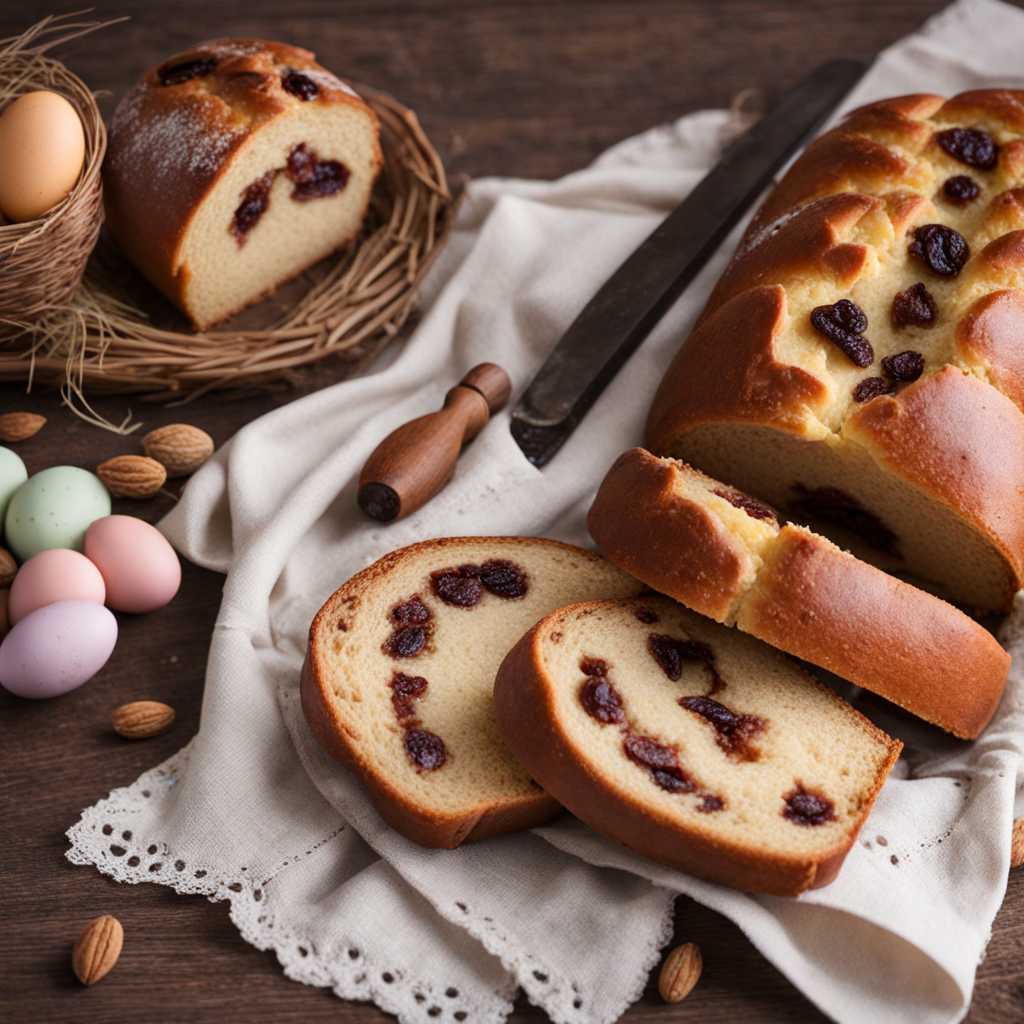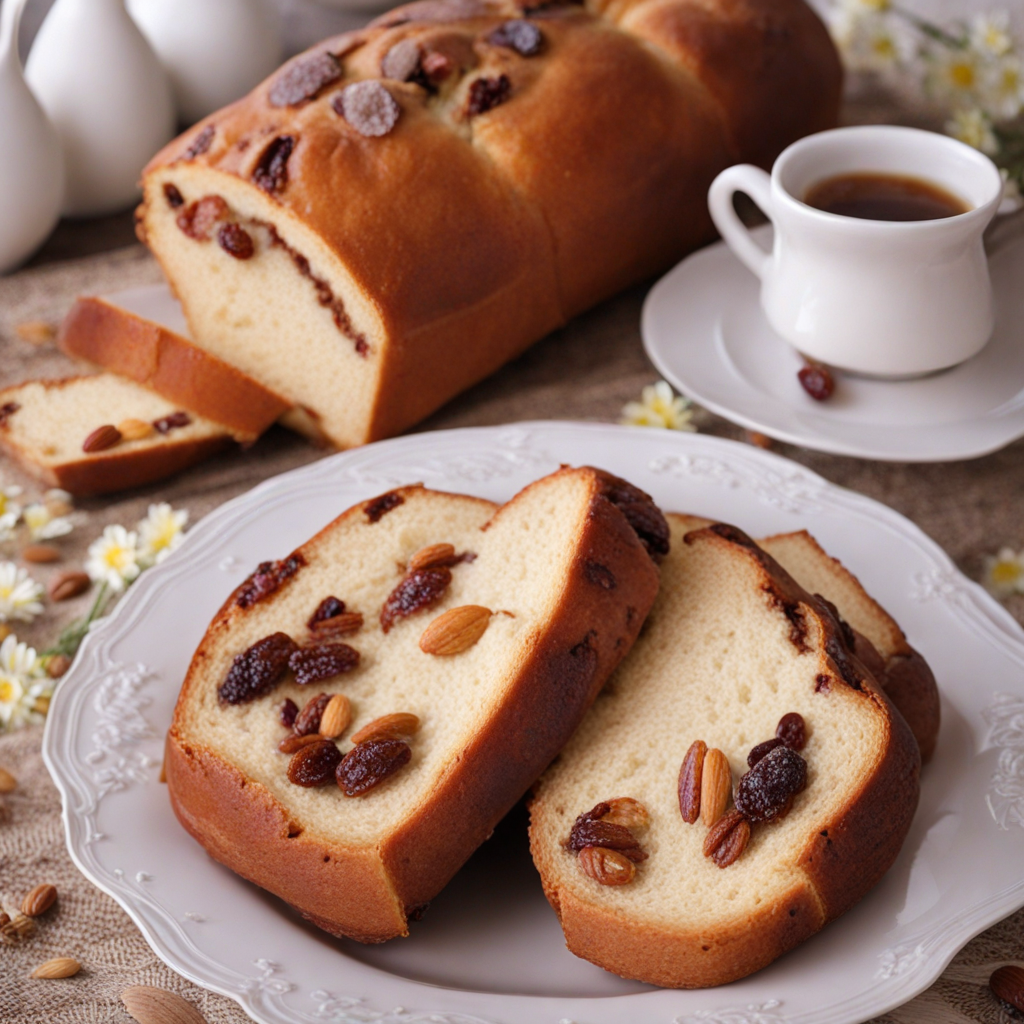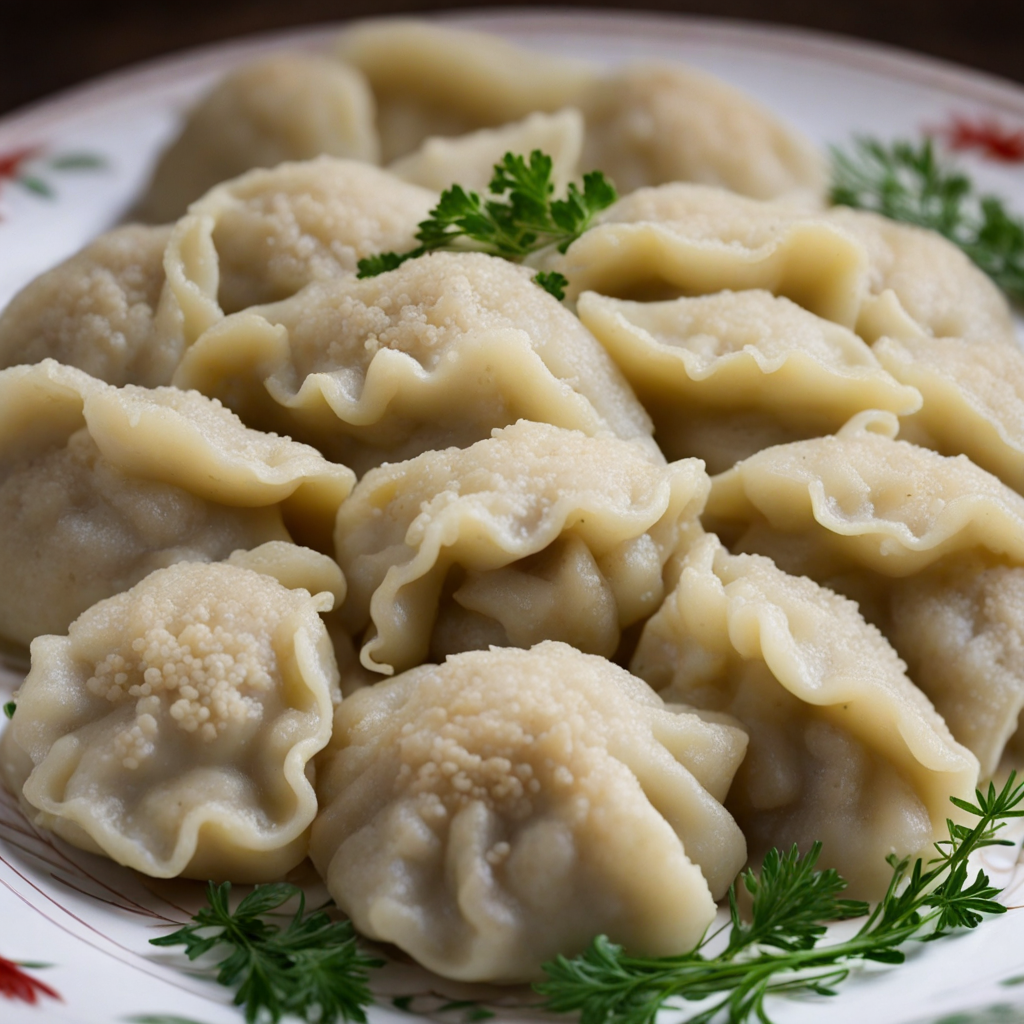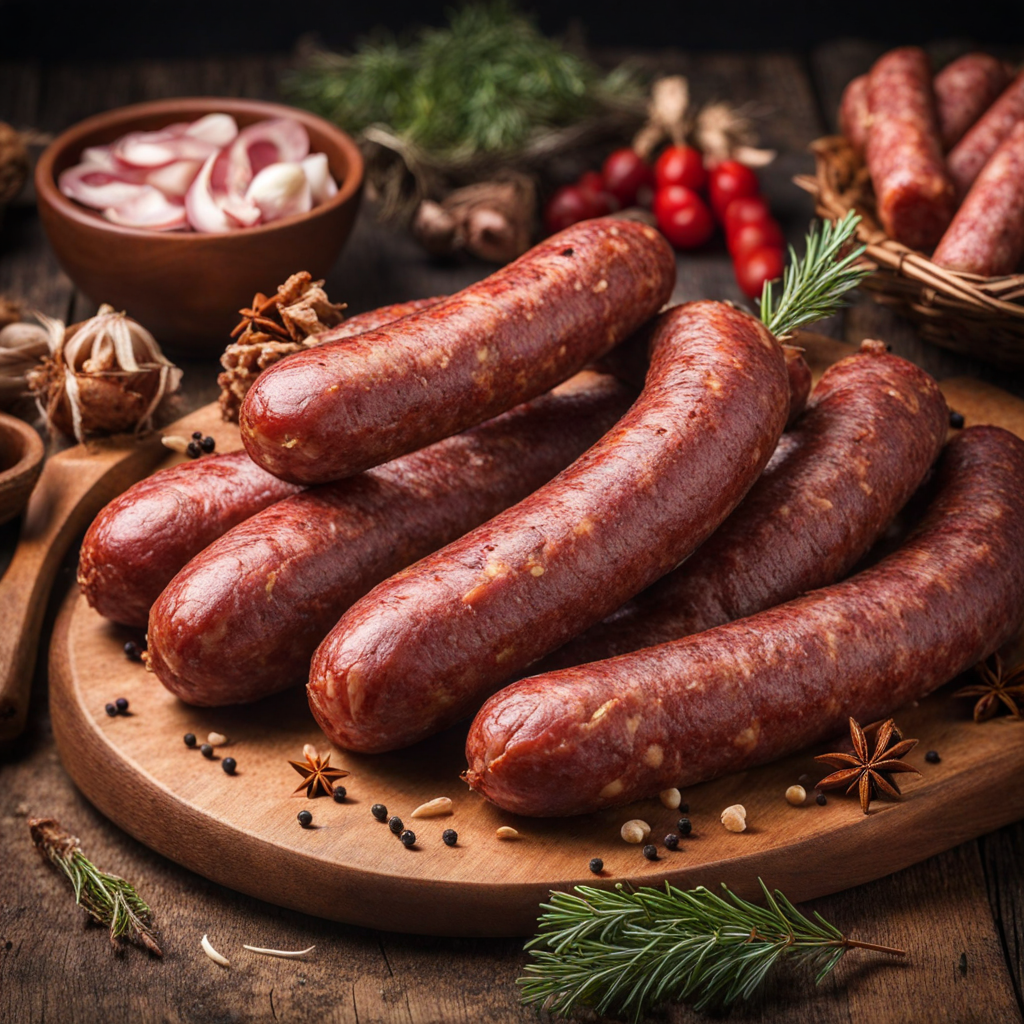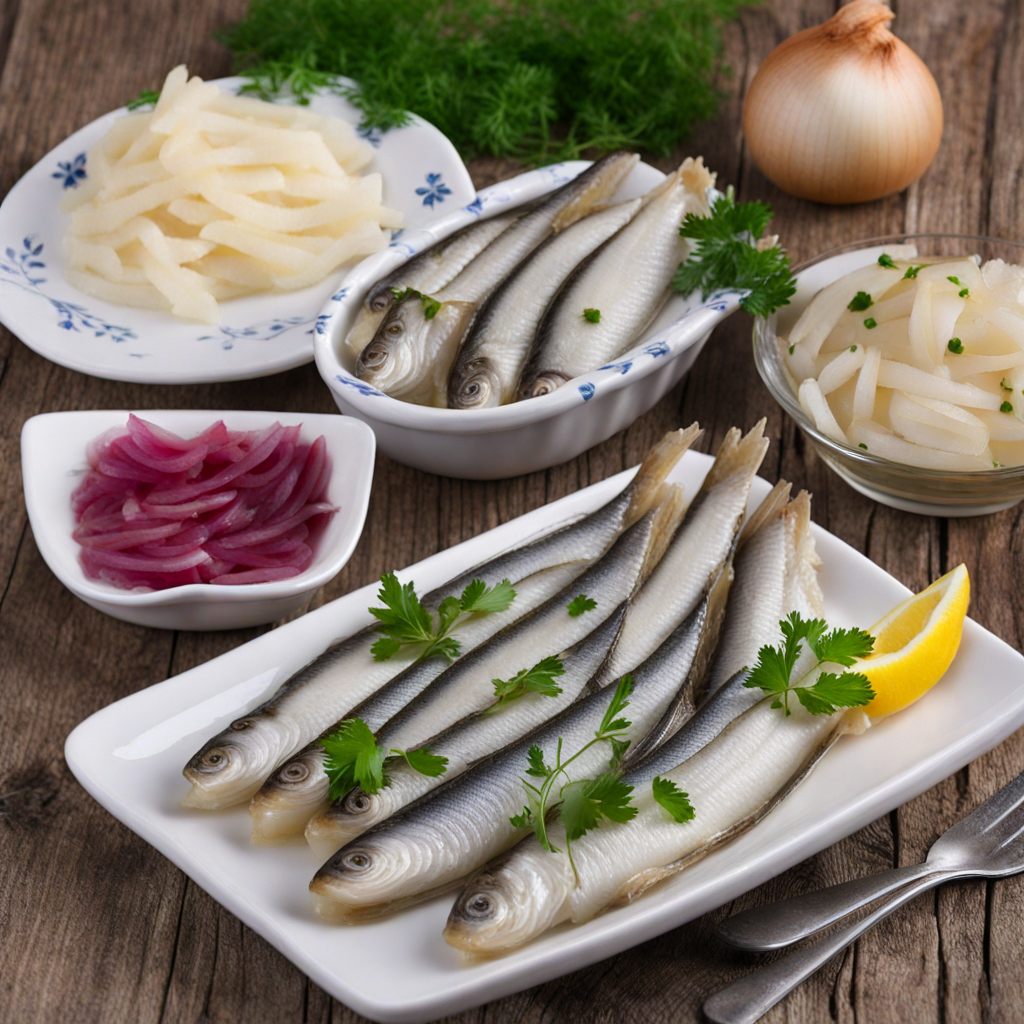Lithuanian Easter Bread
Lithuanian Easter Bread, known as 'Velykų Pyragas,' is a delightful traditional pastry that captures the essence of Lithuanian culinary heritage. This rich, sweet bread is typically made with a combination of flour, eggs, sugar, and butter, resulting in a soft and fluffy texture that melts in your mouth. The dough is often flavored with hints of citrus zest, such as lemon or orange, and sometimes infused with spices like cardamom or vanilla, giving it a unique aromatic profile that sets it apart from other Easter breads around the world. One of the distinguishing features of Velykų Pyragas is its elaborate presentation. The bread is often shaped into a round loaf or braided into intricate designs, symbolizing the unity and strength of family bonds. Many bakers also incorporate colorful decorations, such as sprinkles or edible flowers, to enhance the festive appearance. Traditionally, the bread is adorned with eggs, which represent new life and resurrection, making it a centerpiece of Easter celebrations in Lithuanian households. When it comes to taste, Lithuanian Easter Bread is a harmonious blend of sweetness and warmth. The golden crust provides a satisfying crunch, while the soft, pillowy interior is subtly sweet, inviting you to savor each bite. Enjoyed fresh out of the oven, it can be served plain or accompanied by butter, cheese, or even a dollop of jam. Velykų Pyragas is not just a treat for the palate; it embodies a rich cultural tradition, making it a must-try for anyone looking to explore the delicious flavors of Lithuania.
How It Became This Dish
The History of Šventinis Pyragas: A Lithuanian Culinary Tradition #### Origins Šventinis pyragas, often translated as "festive cake," holds a special place in Lithuanian culinary culture. Its origins can be traced back to the agrarian society of Lithuania, where food was not merely sustenance but an essential component of cultural identity and social gatherings. The word "šventinis" translates to "festive," indicating that this cake is traditionally prepared for special occasions. Its roots can be linked to pagan customs and the seasonal festivals that marked the agricultural calendar, such as harvest celebrations and religious holidays. Lithuania's history has been shaped by a confluence of influences, including the Baltic tribes, the Grand Duchy of Lithuania, and later, interactions with Poland, Russia, and Western Europe. As a result, Lithuanian cuisine is a rich tapestry woven from various threads of cultural influences. Šventinis pyragas embodies this complexity, featuring a blend of local ingredients and techniques that evolved over centuries. #### Cultural Significance Šventinis pyragas is much more than just a dessert; it is a symbol of celebration and community. The cake is traditionally prepared for significant life events such as weddings, birthdays, and religious holidays, including Christmas and Easter. In a society where food plays a pivotal role in rituals and gatherings, this cake serves as a centerpiece, bringing together family and friends. The preparation of Šventinis pyragas is often a communal activity, where family members, especially women, gather to share recipes, stories, and laughter. This process reinforces family bonds and preserves cultural heritage. In many ways, the cake acts as a vessel for memory, carrying with it the stories of generations past. In Lithuanian culture, the act of baking is imbued with a sense of spirituality. Ingredients are often sourced from one's own garden or locally, reflecting a deep connection to the land. The communal aspect of baking and sharing the cake during festivities echoes a broader ethos of hospitality and kinship that permeates Lithuanian society. #### Development Over Time The traditional recipe for Šventinis pyragas has evolved throughout the years, adapting to changing tastes and available ingredients. Originally, the cake was a simple yeast-based creation, similar to a sweet bread, enriched with eggs and butter. It was often flavored with spices such as cinnamon, nutmeg, and cardamom, which were valued for their aromatic qualities as well as their perceived medicinal properties. As Lithuania's history unfolded, so too did its culinary landscape. The late 19th and early 20th centuries marked a period of significant change. The influence of Russian and Polish cuisines began to permeate Lithuanian cooking, introducing new flavors and techniques. During this time, Šventinis pyragas began to take on additional elements, including the use of dried fruits, nuts, and even poppy seeds—ingredients that were not traditionally part of the recipe. In the mid-20th century, after World War II and during the Soviet era, the availability of ingredients became more restricted. This period saw a dramatic shift in the culinary practices of the Lithuanian people, who often had to rely on what was locally available or preserved. Many traditional recipes, including Šventinis pyragas, were simplified as families adapted to the constraints of a changing economy. However, the symbolic importance of the cake remained intact, even as its composition varied. Following Lithuania's independence in 1990, there was a resurgence of interest in traditional foods and recipes. The country experienced a culinary renaissance, as chefs and home cooks alike sought to reclaim and celebrate their heritage. Šventinis pyragas enjoyed a renaissance as well, with modern interpretations emerging alongside the classic versions. Contemporary bakers began experimenting with flavors and techniques, incorporating elements like chocolate, seasonal fruits, and innovative fillings, while still respecting the traditional aspects of the cake. #### Ingredients and Preparation The classic Šventinis pyragas is generally made from a rich dough that includes flour, eggs, sugar, butter, and yeast. The dough is allowed to rise, creating a light, airy texture that contrasts beautifully with the dense richness of the cake. Traditional variations may include fillings such as poppy seeds, nuts, or dried fruits, which add depth and a hint of sweetness. The cake is often shaped into a round or a braided form, symbolizing unity and continuity—a visual representation of the bonds shared during celebrations. A hallmark of Šventinis pyragas is its glaze, which may be a simple sugar icing or a more elaborate decoration featuring dried fruits and nuts, adding an aesthetic appeal that elevates its presence at festive gatherings. #### The Modern Era In contemporary Lithuania, Šventinis pyragas continues to occupy a cherished space in the hearts of the people. It is a staple at family gatherings, public celebrations, and during the holidays. In urban areas, artisanal bakeries have emerged, offering a range of interpretations of the traditional cake, appealing to both locals and tourists eager to experience authentic Lithuanian flavors. Moreover, the globalization of cuisine has prompted a revival of interest in traditional dishes, as people look to connect with their roots. This has resulted in a renewed appreciation for the craftsmanship and cultural significance embedded in foods like Šventinis pyragas. Social media platforms have played a crucial role in this resurgence, as home bakers share their creations, stories, and variations, fostering a sense of community and celebration around this iconic cake. #### Conclusion Šventinis pyragas is more than just a cake; it is a representation of Lithuania's rich history, cultural heritage, and communal spirit. Its journey from a simple agricultural staple to a beloved festive centerpiece reflects the resilience and adaptability of Lithuanian cuisine. As Lithuania continues to navigate its identity in an increasingly globalized world, Šventinis pyragas remains a cherished symbol of home, tradition, and unity—a sweet reminder of the past and a delicious celebration of the present.
You may like
Discover local flavors from Lithuania


